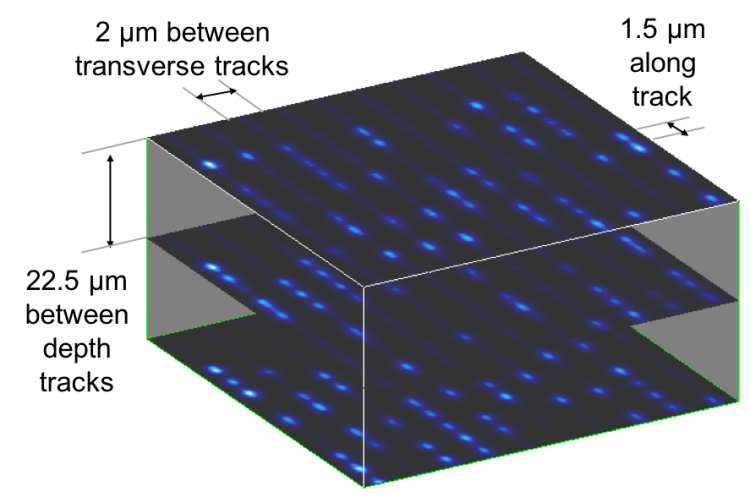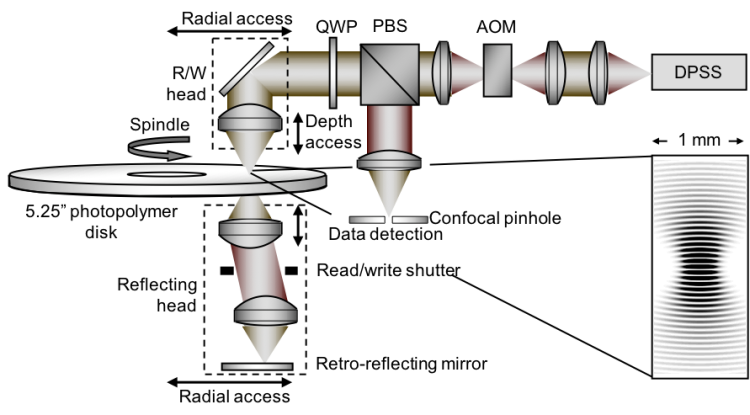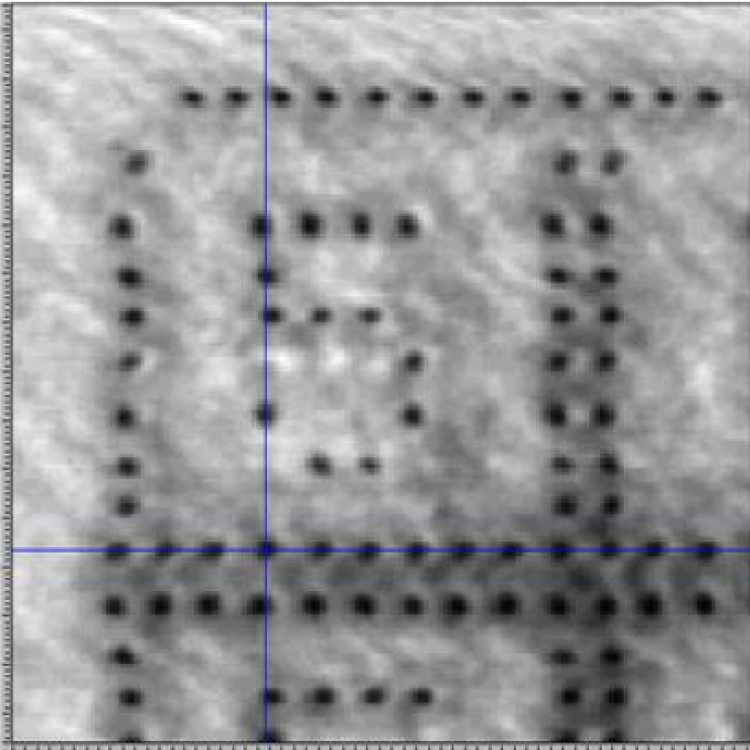Holographic Optical Data Storage
A major driver for the development of holographic photopolymers was the concept of optically storing data in a 3D volume. The traditional approach to this problem was to spatially modulate a laser beam with an image of ~one million bits, record a hologram of this image, then use Bragg selectivity to record subsequent images at the same location to achive storage densities as high as several Tbit/square inch. Starting while at a Silicon Valley startup, Siros Technologies, we explored an alternative approach extnending current optical disk technologies. Here, a spinning disk is written and read by a focused beam and data is represented by isolated "micro-holograms." These are tiny (several microns cubed) volumes of Bragg retroreflectors written by the interference of the write laser focus and a retroreflected copy. The disk, which is moving at tens of meters per second, records these nanosecond exposures as bright retroreflecting bits.
The team
- Sarah Walter
- Much of this work was performed at Siros Technologies, a startup founded by Bert Hesselink
Learn more
- R. R. McLeod, Impact of phase aberrations caused by multilayer optical data storage in weakly inhomogeneous media, JOSA B 26, 308-317, 2009.
- R. R. McLeod, A. J. Daiber, M. E. McDonald, T. L. Robertson, T. Slagle, S. L. Sochava, and L. Hesselink, Microholographic multilayer optical disk data storage, Applied Optics 44, 3197-3207, 2005.
- R. R. McLeod, A. J. Daiber, T. Honda, M. E. McDonald, T. L. Robertson, T. Slagle, S. L. Sochava, and L. Hesselink, Three-dimensional optical disk data storage via the localized alteration of a format hologram, Applied Optics 47, 2696-2707, 2008.
- Sarah K. Walter, Master of Science in Electrical Engineering, Parallel read/write system for optical data storage, University of Colorado, 2005.
Sample results

Microholographic data storage writes individual bits into the homogeneous volume of a ~mm thick photopolymer disk. This figure shows the readout signal from a written disk, measured by scanning the read head at very fine spacing over three adjacent storage layers. Each bright spot is a microholographic reflector, indicating the presense of a "1".

The disk drive for writing and reading microholograms is similar to a CD/DVD/BD system with the addition of a retroreflector. This creates a coutner propagating focus which interferese with the incident focus to form an interference pattern occuping about 1 cubic micron. This interference pattern is recorded by the polymer to form a small reflective region represnting a written "1."

We further simplified the previous approach by first writing a volume Bragg reflector into the polymer disk, then using the write head (with no retroreflector) to locally modify the Bragg grating to decrease its reflectivity. This figure shows a test pattern of dark, nonreflective spots written into a weakly retroreflecting volume (the bright background).


